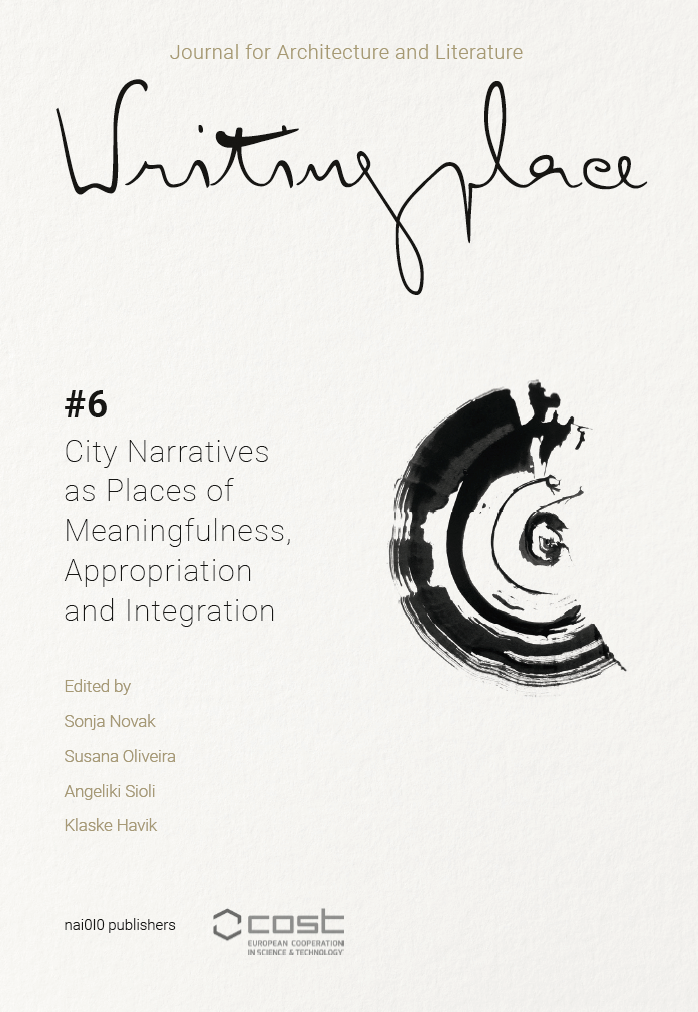Narrative Deserts and Embodied Meanings in the City
The Microstories of Ghent’s City Pavilion
DOI:
https://doi.org/10.7480/writingplace.6.6352Abstract
In his famous analysis of everyday life, Michel de Certeau examines how the technocratic discourse of production and consumption deprives urban inhabitants of meaningful stories. At the same time, he discerns a proliferation of microstories that resist this homogenization. We want to argue that de Certeau’s work is still very relevant for a discussion about meaningfulness and the contemporary city, if we take into account that these stories can also be antagonistic and even destructive. Following the work of Mark Johnson, we also would like to regard meaning as something that is not only linguistic, but emerges from an affective, sensorial interaction with our built environment. As a case study, we will discuss Ghent’s City Pavilion, designed by Robbrecht & Daem and Marie-José Van Hee architects, as a generator of stories and embodied meanings, both positive and negative.
References
André Loeckx and Hilde Heynen, ‘Meaning and Effect: Revisiting Semiotics in Architecture’, in: Sebastiaan Loosen, Rajesh Heynickx and Hilde Heynen (eds.),
The Figure of Knowledge. Conditioning Architectural Theory, 1960s–1990s (Leuven, 2020), 31-61: 31-32.
Michel de Certeau, The Practice of Everyday Life, translated by Steven Rendall (Berkeley/Los Angeles/London, 1988), 123.
Jeff Mermelstein, #nyc (London, 2020).
Michel de Certeau, L’Etranger ou l’union dans la difference (Paris, 2005).
Ronald Schleifer and Alan Velie, ‘Genre and Structure: Toward an Actantial Typology of Narrative Genres and Modes’, MLN 102/5 (1987), 1122-1150: 1126 ff.
Mark Johnson, The Meaning of the Body: Aesthetics of Human Understanding (Chicago, 2007), xi.
Mark Johnson, ‘The Embodied Meaning of Architecture’, in: Sarah Robinson and Juhani Pallasmaa (eds.), Mind in Architecture: Neuroscience, Embodiment, and the Future of Design (Cambridge, MA, 2015), 33-50: 40.
Guy Châtel, ‘Stedenbouw (en architectuur) volgens artistieke principes’, in: Christoph Grafe (ed.), Radicale Gemeenplaatsen: Europese architectuur uit Vlaanderen: Architectuurboek Vlaanderen Vol. 10 (Antwerp, 2012), 258-267.
Johnson, ‘The Embodied Meaning of Architecture’, op. cit. (note 9), 41 ff.
Downloads
Published
How to Cite
Issue
Section
License
Copyright (c) 2022 Kris Pint

This work is licensed under a Creative Commons Attribution 4.0 International License.



